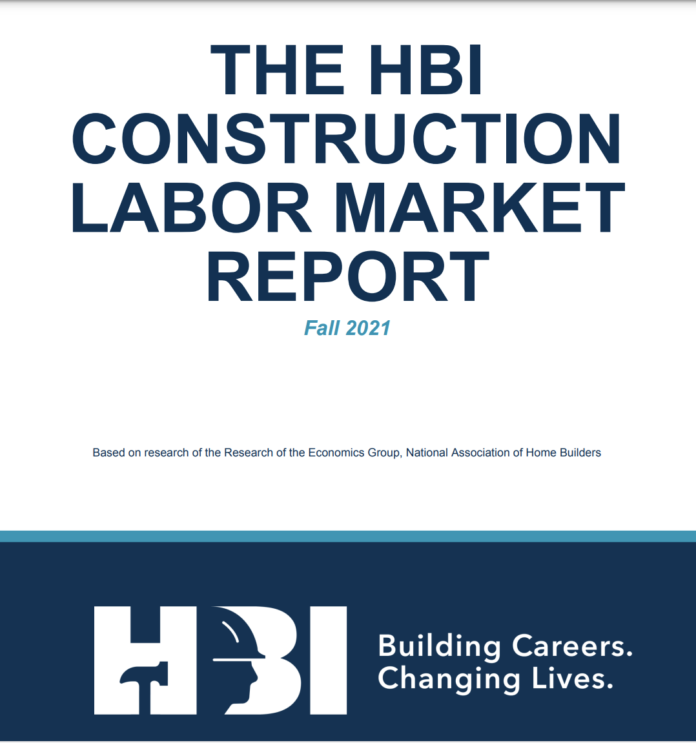A lack of skilled construction labor is a key limiting factor for improving housing inventory and affordability, according to a new report by the Home Builders Institute (HBI). Additionally, the report cautions that the required number of construction workers to keep up with demand is approximately 740,000 new workers per year for the next three years,
HBI’s Fall 2021 Construction Labor Market Report’s estimation of the current need for additional workers is based on a new analysis of Bureau of Labor Statistics data by the National Association of Home Builders (NAHB). The estimate is determined by approximating the required net growth in employment due to construction expansion plus the workers required to replace individuals who leave the sector permanently.
“The construction industry needs more than 61,000 new hires every month if we are to keep up with both industry growth and the loss of workers either through retirement or simply leaving the sector for good,” Washington, D.C.-based HBI president and CEO Ed Brady said in a Nov. 4 statement. “From 2022 through 2024, this total represents a need for an additional 2.2 million new hires for construction. That’s a staggering number.”
Meanwhile, the report shows home sales outpacing home construction, resulting in growing backlog and supply-chain bottlenecks. More than 12 million new households have been formed since the beginning of 2012, while approximately only 10 million new homes for ownership and rent were built during the same time.
“The U.S. is experiencing a historically low supply of homes for sale, especially at the lower price points that newly formed households tend to need,” Brady said. “For residential construction to expand and housing affordability to increase, more skilled building trade workers must be recruited and trained for the home building sector.”
The report, based on research of NAHB’s Economics Group, provides an overview of the state of the nation’s construction labor market. Other key findings include:
- The number of open construction sector jobs currently averages between 300,000 to 400,000 each month.
- Half of payroll workers in construction earn more than $50,460 annually and the top 25% make at least $71,000. In comparison, the U.S. median wage is $49,150 while the top 25% make at least $67,410.
- Construction employment currently totals 7.42 million. Residential construction represents 3.1 million of this total amount.
- Self-employment in construction is currently 22% of the labor force, down from 26% in 2010.
- The share of immigrants in construction trades is 30%.
- Women make up a slightly growing share of the construction employment, up to 10.9% in 2020 from 10.3% in 2019.
- The median age of construction workers is 41. However, due to aging trends, the share of construction workers aged 25 to 54 decreased from 72.2% in 2015 to 69.0% in 2019.
“The construction worker shortage has reached crisis level,” said Brady. “The situation will become more challenging in the coming year when other industries rebound and offer competitive wages and benefits to prospective employees.”
“We need to build the next generation of skilled tradespeople in construction,” he added. “One of our most important tasks as an industry is to work with parents,educators and students, as early as the middle school years, to demonstrate that young people can have the promise of great jobs and careers in the trades.”
The chief executive outlined six fundamental steps that home builders can take to increase the number of skilled construction trade workers in the U.S.:
-
- Reach out to secondary school students, and those who influence their decisions, to change their perception of careers in construction.
- Increase worker pay while balancing the need to keep homeownership affordable.
- Attract more women into careers in construction.
- Train and place more minority and lower-income youth and adults for job opportunities.
- Increase trade skills education for veterans and transitioning military.
- Work for bipartisan approaches to sensible immigration policies.


